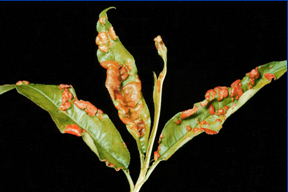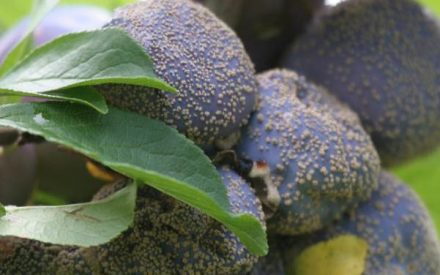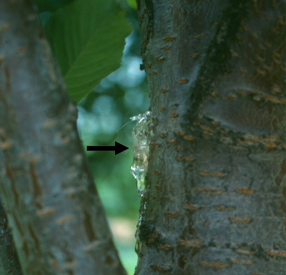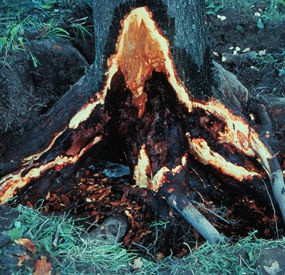What is peach leaf curl?
Peach leaf curl is a common disease of peach and nectarine trees throughout the Midwest and eastern U.S. Where the disease is severe, tree vigor and fruit quality and yield are reduced. Peach leaf curl often becomes more prevalent after relatively mild winters, which are more favorable for the survival of the organism that causes the disease. A related disease, plum pockets, affects plums.

What does peach leaf curl look like?
Diseased leaves are distorted with puckered, thickened, twisted areas that can be light green, yellow, or reddish to purple in color. Leaves later turn brown and fall from the tree. Diseased shoots are stunted with small, yellowish leaves, or have leaves arranged in tight whorls (rosettes). Diseased flowers may abort, leading to reduced fruit set, while diseased fruit are bumpy, reddish in color, and fall prematurely.
Where does peach leaf curl come from?
Peach leaf curl is caused by the fungus Taphrina deformans, which overwinters in bark and bud scales of peach and nectarine trees. Fungal spores infect leaves and shoots in the spring while leaves are still in the bud and as they just begin to emerge. Mild (50 to 70°F), wet weather during this period favors infection. Additional spores form on the surface of diseased tissue, and these spores cause new infections if the weather remains mild and wet.
How do I save trees that have peach leaf curl?
Peach leaf curl is unlikely to kill a peach or nectarine tree on its own. However, if significant premature leaf drop occurs, trees will be susceptible to drought stress and winter injury. To help maintain tree vigor, apply water (approximately one inch per week) at the drip lines (i.e., the edges of where the branches extend) of peach and nectarine trees during dry periods. Also, fertilize trees with nitrogen, but avoid fertilizing after August 1; late season fertilization will prevent trees from hardening off properly before winter, making them prone to winter injury. Finally, thin fruit if the crop load is heavy.
How do I avoid problems with peach leaf curl in the future?
Because Taphrina deformans survives in bark and bud scales, removing diseased leaves in the fall will not reduce disease. To prevent serious problems with peach leaf curl, plant resistant or tolerant peach varieties (e.g., ‘Frost’, ‘Indian Free’, ‘Q-1-8’, varieties derived from ‘Redhaven’). Avoid growing susceptible varieties (e.g., those derived from ‘Redskin’). In addition, consider applying a single fungicide spray in the fall after leaf drop or in the spring before buds begin to swell to control peach leaf curl (and also plum pockets). Effective fungicide active ingredients include chlorothalonil, copper (e.g., Bordeaux mixture), and ferbam. Choose a fungicide that is labeled for use on edible fruit crops, and read and follow all label instructions to ensure that you use the product in the safest and most effective manner possible.
For more information on peach leaf curl:
Contact the University of Wisconsin Plant Disease Diagnostics Clinic (PDDC) at (608) 262-2863 or pddc@wisc.edu.
Authors: Patricia McManus and Brian Hudelson, UW-Madison Plant Pathology
Last Revised: 03/01/2024
D-number: D0076
References to pesticide products in this publication are for your convenience and are not an endorsement or criticism of one product over similar products. You are responsible for using pesticides according to the manufacturer’s current label directions. Follow directions exactly to protect the environment and people from pesticide exposure. Failure to do so violates the law.
Thanks to Patti Nagai, Teryl Roper, and Ann Wied for reviewing this document.
A complete inventory of UW Plant Disease Facts is available at the University of Wisconsin-Madison Plant Disease Diagnostics Clinic website: https://pddc.wisc.edu.
Send a Plant Sample for Analysis
Be cautious when self-diagnosing plant health issues. Very few diseases can accurately be diagnosed by eye.
Contact the UW Plant Disease Diagnostics Clinic (PDDC), and for a small fee, clinic staff can examine a plant, determine the cause of the disease/disorder, and provide advice on how to control or prevent the issue.
Download Article





 Brown Rot
Brown Rot Bacterial Canker
Bacterial Canker Root and Crown Rots
Root and Crown Rots Plum Pox
Plum Pox


